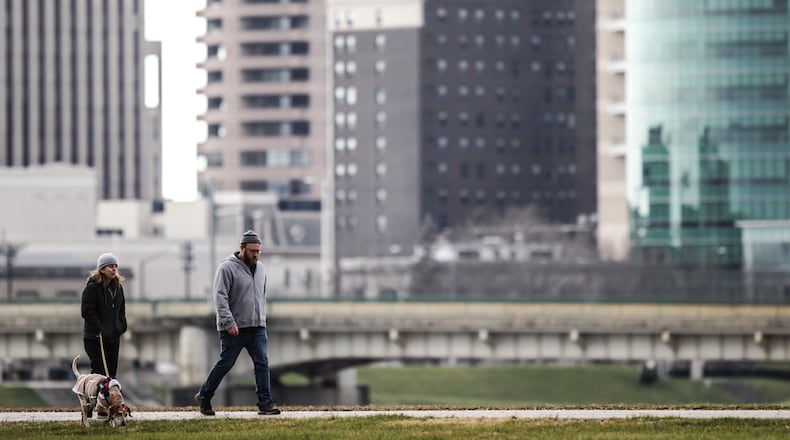“Before Thanksgiving we very concerned about a potential surge in cases,” Gov. Mike DeWine said Monday. “Thankfully we have not seen cases go up dramatically. If we can get through Christmas and New Year’s without a significant surge, we will be much better positioned to start 2021 against this virus.”
DeWine, citing New York Times data analysis, said people had 60-70% fewer contacts over Thanksgiving. The governor added that going into the Christmas holiday, which lasts longer, it’s important to continue limiting contact to prevent a surge in cases.
While Ohioans did a good job at preventing a post-Thanksgiving spike, Dr. Bruce Vanderhoff, Ohio Department of Health chief medical officer, said that hospitals are still “extremely busy with COVID-19.”
“Adding a post holiday spike to that would create a terrible situation,” he said. “What’s important to remember is the actions that we are taking right now will show up in weeks. So we can’t let ourselves be lulled into a sense of complacency.”
Holidays at home
With the coronavirus still widespread and hospitalizations high, the safest way to celebrate winter holidays is at home with the people you live with, public health officials said.
Some ideas the CDC has for celebrating the winter holidays safely include hosting a virtual celebration with gift opening, sharing a meal over video chat, or driving or walking around your community to look at decorations.
While it’s safest to not gather with people outside your household, if you do get together, steps can be taken to lower the risk level, said Marietta Orlowski, chair of the Department of Population and Public Health Sciences at Wright State University.
Think about both the environment where gatherings will be held and the behaviors at each gathering, Orlowski said.
“There’s a series of things that we can do in each of those categories that can lower the risk, or the opposite of that is there’s things that raise the risk as well,” Orlowski said.
Gatherings and activities held outdoors are safer than indoor gatherings. Winter hiking on local trails, or walking around and looking at downtown lights can be good alternatives.
If you host, some of the ways the CDC recommends to make your gathering safer include having conversations with guests ahead of time to set expectations, keeping the group small, wearing masks, and providing extra unused masks in case guests need one.
Open windows and doors, the CDC advises, using a window fan in one of the open windows to blow air out. That will pull fresh air in through the other open windows. A portable HEPA air filter also can help.
Shortening the amount of time in a room also helps lower the risk when gathering indoors.
Bring your own food and dishes if going to a gathering. Cancel your gathering if you or someone who lives with you is sick or has been near someone who thinks they have or has COVID-19.
If gathering, Orlowski said it’s also good to think about whether or not the people you are gathering with have also been practicing mask wearing and limiting travel.
“This time next year, the holidays will be a kind of story that we retell. I think we all want to be able to say that we did our part and that we protected the ones that we love,” Orlowski said.
Safer celebrations
Some recommendations from the CDC for celebrating winter holidays safely:
· Hosting a virtual celebration. Schedule a time to eat a meal together over video chat. Over video chat you can open gifts, host a virtual ugly holiday sweater contest, build gingerbread houses, decorate cookies, or make holiday crafts and decorations.
· Driving or walking around your community to look at decorations from a safe distance or drive through a local holiday lights display.
· Enjoying the winter weather if you live somewhere with snow. Build a snow fort or hold a snow angel contest. Go on a winter hike.
· Making holiday crafts, cards or cookies to drop off at the door of loved ones.
About the Author

